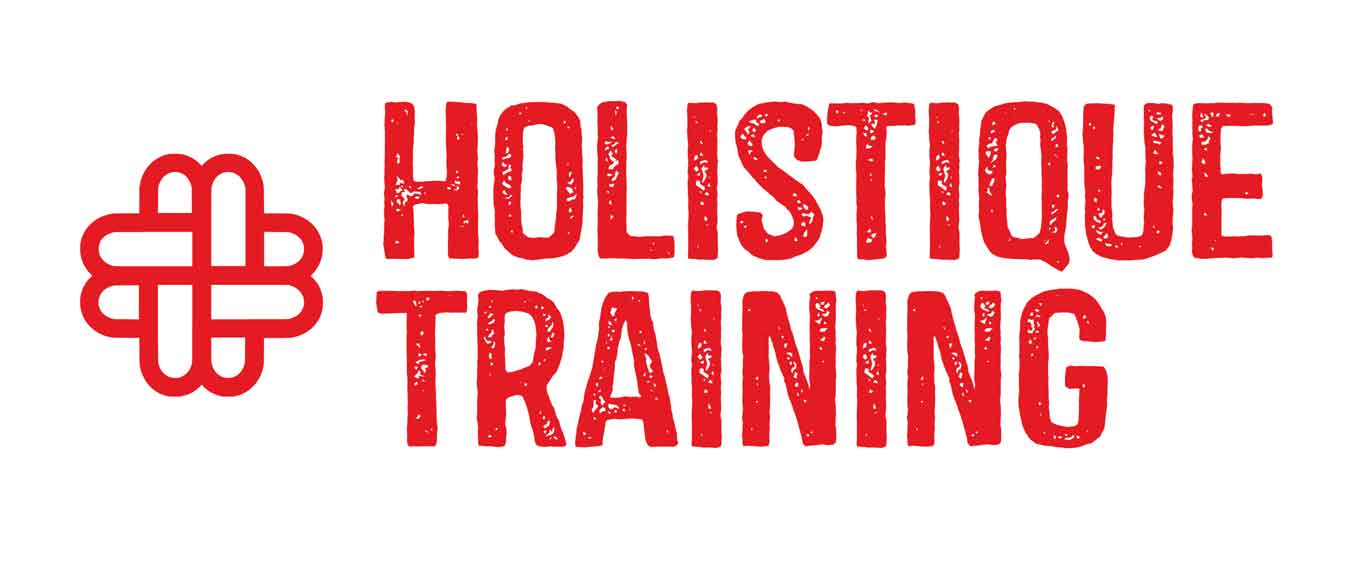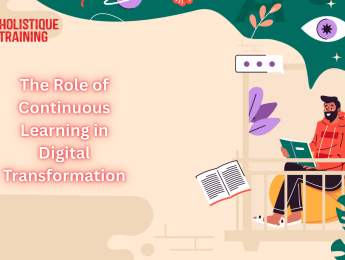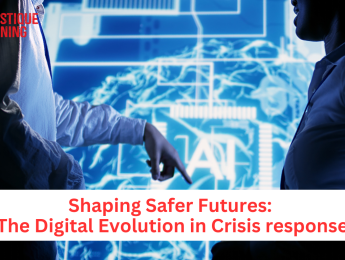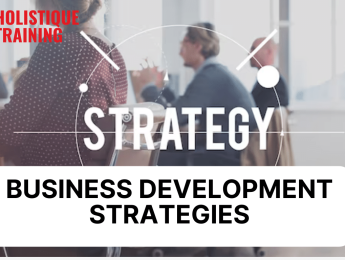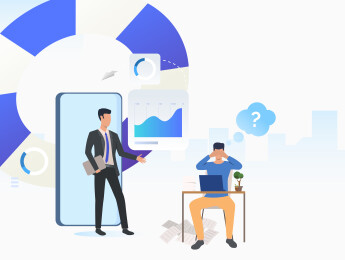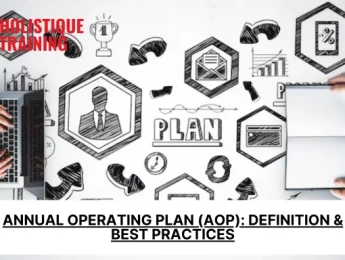- Table of Contents
- 1. Introduction
- 2. What Is Continuous Learning?
- 3. Why Digital Transformation Requires Lifelong Learning
- 4. Critical Digital Skills That Demand Ongoing Development
- Data Literacy and Analytics
- Artificial Intelligence and Machine Learning
- Cybersecurity Awareness
- Digital Collaboration Tools
- 5. The Organisation’s Role in Supporting a Learning Culture
- On-the-job training
- E-learning platforms
- Allocated learning time
- Upskilling programmes
- 6. Benefits of Continuous Learning for Employees
- Career Advancement
- Confidence and Adaptability
- Job Satisfaction
- Long-Term Employability
- 7. Organisational Gains from Investing in Learning
- Innovation and Creativity
- Productivity
- Customer Experience
- Organisational Resilience
- 8. Overcoming Barriers to Continuous Learning
- Time Constraints
- Budget Limitations
- Resistance to Change
- 9. Real-World Examples of Learning-Led Digital Transformation
- Microsoft: From Know-It-All to Learn-It-All
- Accenture: Learning at Scale
- Conclusion
1. Introduction
We are witnessing a technological revolution that is fundamentally transforming every facet of our lives—from the way we interact and consume information to how we work and innovate. This ongoing phenomenon, widely referred to as digital transformation, extends far beyond the adoption of new technologies. It involves a deep, structural shift in how organisations operate, compete, and deliver value to their customers. It also affects individuals at every professional level, requiring new skills, new mindsets, and an ever-growing capacity for adaptation.
In the face of automation, artificial intelligence, big data, and rapidly evolving digital ecosystems, traditional skillsets are no longer sufficient. The lifespan of a learned skill is shrinking; what was once considered cutting-edge a few years ago can become outdated within months. Roles are being redefined, and entire industries are being disrupted. To remain relevant and thrive in this dynamic environment, both individuals and organisations must embrace continuous learning as a strategic priority rather than a peripheral activity.
Continuous learning is not merely a tool for career progression—it is the backbone of agility, resilience, and long-term growth in the digital era. In this article, we will explore why continuous learning is essential in today’s world, how it differs from traditional models of education, which key digital competencies demand consistent attention, and what role both employers and employees must play in fostering a culture of lifelong learning. Whether you are leading a team or navigating your own professional development, understanding the value of continuous learning is vital for future success.
2. What Is Continuous Learning?
Continuous learning is the proactive and sustained acquisition of knowledge and skills throughout an individual's professional life. Unlike conventional education, which typically concludes after a fixed period of formal study, continuous learning is a lifelong journey. It bridges the gap between academic qualifications and evolving real-world requirements, enabling individuals to remain competent, adaptable, and innovative.
This form of learning extends beyond the classroom, encompassing a wide range of learning formats—from traditional, structured pathways to self-initiated, flexible experiences. Importantly, continuous learning is not limited to specific job roles or industries; rather, it is a universal necessity for anyone who wishes to remain relevant in a digital-first world.
Below is a breakdown of the three primary forms of continuous learning:
Type | Description | Examples |
Formal Learning | Structured learning often tied to a curriculum and certification. | Academic degrees, professional diplomas, accredited online courses. |
Informal Learning | Unstructured, voluntary learning driven by curiosity or interest. | Podcasts, blogs, TED Talks, YouTube tutorials, industry newsletters. |
Experiential Learning | Practical, hands-on learning through direct experience or collaboration. | Job rotations, mentoring, shadowing, roject-based work. |
Each type serves a unique purpose. Formal learning builds foundational knowledge, informal learning encourages exploration and responsiveness, and experiential learning translates knowledge into real-world competence. Together, they create a well-rounded, future-ready learner.
Continuous learning is no longer a luxury; it is an economic and professional necessity. In a marketplace where skills can become obsolete in the span of a few years—or even months—those who engage in lifelong learning are better equipped to seize new opportunities, solve complex problems, and contribute meaningfully in a digitally evolving world.
3. Why Digital Transformation Requires Lifelong Learning
Digital transformation is not a one-off event—it is an ongoing process of change that affects how businesses operate, deliver value, and engage with both customers and employees. This transformation is underpinned by the continual emergence of new technologies, from artificial intelligence and cloud computing to blockchain and advanced data analytics. As these innovations evolve, they fundamentally alter job functions, organisational structures, and required competencies.
The digital landscape is shifting at a pace that far outstrips traditional methods of upskilling and workforce planning. Today, learning must happen in real time. Static knowledge is no longer enough. The skills required to thrive in this environment are constantly being redefined, demanding a mindset of agility, curiosity, and resilience.
According to the World Economic Forum’s Future of Jobs Report 2023, 44% of workers’ core skills are expected to change by 2027. This statistic highlights an urgent imperative: individuals and organisations alike must view learning not as a phase but as a continuous, integrated part of professional life.
What’s more, the half-life of a skill—the time in which a learned skill becomes half as valuable—is now estimated to be around five years for technical competencies and even shorter for digital tools. This means that what we know today may be insufficient tomorrow.
But the shift isn’t purely technological—it is also structural and behavioural. Organisations are flattening hierarchies, decentralising decision-making, and adopting more agile workflows. In such dynamic ecosystems, employees who continuously evolve their capabilities are far more likely to remain relevant, effective, and employable.
Lifelong learning is therefore not merely about keeping up—it is about staying ahead.
4. Critical Digital Skills That Demand Ongoing Development
As technology redefines the world of work, certain digital skills have emerged as essential for navigating this transformation effectively. These skills are no longer confined to IT departments; they are increasingly expected across all roles and sectors. Below are four of the most critical areas where continuous learning is required:
Data Literacy and Analytics
In the digital economy, data has become the most valuable asset. However, data in itself is meaningless without interpretation. Data literacy refers to the ability to read, understand, analyse, and communicate data insights effectively. This goes beyond working with spreadsheets—it includes understanding data sources, identifying trends, recognising bias, and drawing actionable conclusions.
For employees across all departments—from marketing and HR to operations and finance—this skill is vital. Businesses that empower their staff with data literacy can make faster, smarter, and more strategic decisions. Without it, even the most sophisticated tools risk being underutilised or misapplied.
Artificial Intelligence and Machine Learning
Artificial intelligence (AI) is revolutionising sectors by automating tasks, generating predictions, and enabling more efficient operations. From chatbots and recommendation engines to fraud detection and medical diagnostics, AI is now deeply embedded in everyday business.
Professionals do not necessarily need to become data scientists, but a basic understanding of how AI works—and how it can be used responsibly—is increasingly expected. This includes familiarity with algorithms, data inputs, model outputs, and ethical implications. Collaborating effectively with AI systems requires more than just technical knowledge; it requires trust, awareness, and critical thinking.
Cybersecurity Awareness
As organisations digitise their services and store more data online, they also become more vulnerable to cyber threats. Cybersecurity is no longer the sole concern of IT departments. Every employee, regardless of role, must understand how to recognise phishing attempts, protect sensitive data, and follow security best practices.
With cyberattacks growing in sophistication and frequency, a single mistake—such as clicking a malicious link—can lead to major data breaches or financial loss. Regular training and awareness initiatives ensure that employees are not the weakest link in the security chain, but rather a strong first line of defence.
Digital Collaboration Tools
The global shift to hybrid and remote working models has made digital collaboration skills essential for maintaining productivity and cohesion. Tools like Slack, Microsoft Teams, Zoom, Miro, and Google Workspace are now staples of modern workplaces.
However, using these tools effectively requires more than knowing how to send a message or host a video call. It involves managing workflows, setting digital boundaries, facilitating real-time collaboration, and fostering inclusive communication in virtual environments. Mastery of these platforms improves not just efficiency but also team morale and clarity.
5. The Organisation’s Role in Supporting a Learning Culture
While individual motivation is important, the responsibility of fostering a culture of continuous learning lies significantly with organisations. Companies that view learning as a strategic investment rather than an operational cost are better positioned to retain talent, boost innovation, and remain resilient in times of disruption.
Creating a sustainable learning culture requires more than offering occasional training. It involves embedding learning opportunities into the fabric of daily operations and aligning them with business goals. The following strategies have proven effective in nurturing a learning-first environment:
On-the-job training
One of the most effective ways to learn is by doing. On-the-job training enables employees to develop practical skills while handling real tasks. It reinforces theoretical knowledge with immediate application, enhancing both retention and relevance. This method is particularly valuable for roles that evolve with technology or changing workflows.
E-learning platforms
Digital learning tools like Coursera, LinkedIn Learning, Holistique Training and internal learning management systems (LMS) provide scalable access to a vast array of courses, certificates, and resources. These platforms cater to diverse learning preferences and allow employees to study at their own pace—be it during work hours or in their personal time.
Allocated learning time
Companies like Google have famously implemented policies such as the “20% rule,” where employees are encouraged to dedicate a portion of their time to personal learning or innovation. Whether it’s a few hours per week or a full day per month, designated learning time signals that upskilling is not only permitted—it’s encouraged and valued.
Upskilling programmes
Structured upskilling initiatives are essential to keep employees equipped with both technical and soft skills relevant to their roles. These may include digital literacy workshops, leadership training, AI literacy programmes, or cross-functional development schemes.
According to LinkedIn’s 2024 Workplace Learning Report, 94% of employees stated they would remain longer at a company that invests in their learning and development. This powerful statistic reinforces that learning is not only about future-proofing the workforce—it’s also central to engagement, loyalty, and satisfaction.
When learning is treated as a shared responsibility and supported with time, tools, and recognition, organisations can unlock the full potential of their people and gain a long-term competitive edge.
6. Benefits of Continuous Learning for Employees
From an individual perspective, continuous learning is an empowering pathway toward personal and professional growth. In an age where job markets are fluid and demands are rapidly shifting, those who actively seek to upskill are more likely to remain relevant, confident, and fulfilled in their careers.
Let us explore four key benefits of continuous learning for employees:
Career Advancement
Continuous learning expands an individual’s skill set, making them more competitive when internal opportunities arise or when applying for roles elsewhere. Mastering emerging tools, acquiring certifications, or gaining cross-disciplinary knowledge can open doors to promotions, leadership roles, or career pivots. Employers are more likely to entrust important projects to those who demonstrate commitment to personal development and initiative.
Confidence and Adaptability
Rapid change can be unsettling—but for those who continuously learn, it becomes an opportunity rather than a threat. Learning new technologies, frameworks, or methodologies instils confidence and cultivates an adaptive mindset. This adaptability makes it easier to transition into new roles, take on unfamiliar tasks, or respond positively to restructuring or innovation.
Job Satisfaction
Learning fosters intellectual stimulation and a sense of purpose. Employees who are encouraged to grow professionally are more likely to feel valued and engaged. When individuals are challenged with new ideas and given space to explore, they tend to experience higher levels of motivation and satisfaction in their work. This directly correlates with lower turnover rates and stronger workplace morale.
Long-Term Employability
Perhaps the most crucial benefit is sustained employability. In a labour market increasingly shaped by automation, digitalisation, and global competition, the ability to learn and evolve becomes more important than any one static skill. Continuous learners are better equipped to navigate industry shifts, explore new sectors, and reinvent themselves when needed.
By embracing continuous learning, employees are not only securing their present success—they are actively shaping a more empowered, resilient future. In the digital economy, your most powerful asset is not what you know today, but your ability to learn what tomorrow demands.
7. Organisational Gains from Investing in Learning
While the benefits of continuous learning for employees are evident, the organisational advantages are equally compelling. Companies that invest in learning and development reap wide-ranging rewards that directly impact performance, innovation, and long-term sustainability. Below are four critical areas where learning delivers tangible business value:
Innovation and Creativity
A culture that encourages learning inherently cultivates curiosity, experimentation, and openness to new ideas. Employees who are continuously exposed to emerging trends and new knowledge are more likely to challenge conventional thinking and propose novel solutions. This mindset fuels innovation—not just in product development, but across all facets of the business. Learning keeps teams sharp, imaginative, and unafraid to explore uncharted territory, which is essential in industries where disruption is the norm.
Productivity
Training enhances efficiency. Employees who are well-equipped with the latest tools, technologies, and best practices work faster, make fewer mistakes, and require less supervision. They are also better at collaborating with others and using their time effectively. When learning is embedded into work routines, teams can streamline processes, improve quality, and reduce costly errors—leading to measurable gains in productivity and profitability.
Customer Experience
Customer expectations are higher than ever, and service excellence is often a key differentiator in competitive markets. Employees who understand the latest tools and customer service techniques are more capable of meeting those expectations. Whether it’s resolving queries efficiently, anticipating customer needs, or personalising the service experience, knowledgeable staff drive higher satisfaction and stronger client loyalty. In essence, investing in learning is also an investment in customer success.
Organisational Resilience
Change is inevitable—whether it stems from market shifts, economic downturns, technological disruption, or global crises. Organisations with a highly skilled, continuously learning workforce are better prepared to navigate uncertainty. They can adapt more quickly, redeploy talent as needed, and embrace new tools or business models without extensive lag. This agility is key to surviving and thriving in volatile conditions.
By prioritising learning and development, organisations don’t just prepare their employees for the future—they prepare themselves for it. The ROI of learning is evident not only in numbers, but in culture, innovation, and endurance.
8. Overcoming Barriers to Continuous Learning
Despite the clear benefits, continuous learning is not always easy to implement. Many organisations and individuals encounter real obstacles that hinder progress. Recognising and addressing these barriers is crucial to building an effective and inclusive learning culture.
Time Constraints
One of the most frequently cited challenges is the lack of time. In fast-paced work environments, employees often feel overwhelmed with deadlines, meetings, and daily tasks, leaving little room for development. To overcome this, organisations can introduce microlearning—short, focused learning sessions that can be completed in 10–15 minutes. Additionally, embedding learning into existing workflows, such as through “learning-in-the-flow of work” tools, or dedicating specific hours per month for development activities, can ensure that learning does not feel like a burden.
Budget Limitations
Budget constraints can also limit access to high-quality training, particularly in smaller organisations. However, effective learning need not always come at a high cost. Many respected platforms offer free or low-cost courses, such as Coursera, edX, or open university resources. Furthermore, internal mentorship schemes, cross-training opportunities, and peer-led knowledge sharing can provide valuable learning experiences with minimal financial investment. A creative approach to learning resources can stretch budgets without sacrificing quality.
Resistance to Change
Not all employees immediately embrace learning. Some may feel intimidated by new technologies, sceptical of organisational intentions, or simply reluctant to step outside their comfort zone. To mitigate this, leadership must play a proactive role in normalising learning. This includes framing upskilling as an opportunity rather than a requirement, offering encouragement, and aligning learning with personal goals and career development. Incentivising progress through recognition, internal mobility, or performance reviews can also help to embed a culture where learning is seen as integral, not optional.
Addressing these barriers requires thoughtful planning, empathetic leadership, and a long-term commitment to cultural change. When organisations are intentional about breaking down these obstacles, they pave the way for a truly empowered and future-ready workforce.
9. Real-World Examples of Learning-Led Digital Transformation
Some of the world’s most successful organisations have demonstrated that learning is not merely a support function—it is a strategic pillar for business transformation. These companies did not view learning as a compliance activity, but rather as a competitive advantage that empowered their workforce to lead through change.
Microsoft: From Know-It-All to Learn-It-All
When Satya Nadella took the helm as CEO of Microsoft in 2014, he recognised that the company needed more than just technological innovation—it required a cultural overhaul. Central to this shift was the idea of moving from a “know-it-all” to a “learn-it-all” mindset. Nadella championed a growth-oriented culture where curiosity, humility, and continuous development became core values.
To support this transformation, Microsoft leveraged platforms like LinkedIn Learning and GitHub Learning Lab to provide accessible, personalised training across all levels. These tools allowed employees to upskill in key areas such as AI, cloud computing, and cybersecurity, while also fostering leadership and collaboration skills. This cultural pivot helped Microsoft regain its competitive edge, drive innovation, and attract top talent in a highly dynamic market.
Accenture: Learning at Scale
Accenture, a global leader in consulting and professional services, took a bold approach to digital transformation by investing heavily in its people. Understanding that client demands were shifting toward digital, data, and cloud-based solutions, Accenture launched a comprehensive internal learning platform to serve its 500,000+ employees.
The platform was built to offer tailored learning journeys in cutting-edge domains such as cloud architecture, AI, blockchain, and machine learning. The company also partnered with leading universities and tech providers to deliver accredited certifications. Learning became integrated into the daily experience of consultants and project teams, ensuring they were always ahead of the curve.
This commitment to upskilling did more than build internal capability—it also enhanced client trust and positioned Accenture as a go-to partner for digital transformation projects globally.
Together, these examples underscore a vital truth: learning is not a cost centre—it is a strategic enabler. Companies that invest in continuous learning don’t just adapt to change; they help shape the future of their industries.
Conclusion
In today’s world, where technological change is relentless and job roles are constantly evolving, continuous learning is no longer optional—it is essential. It is the foundation upon which both individuals and organisations can build resilience, remain competitive, and grow sustainably.
For individuals, lifelong learning ensures employability, relevance, and adaptability. It empowers professionals to move confidently across industries, roles, and technologies, rather than being left behind by change. For organisations, fostering a learning-first culture unlocks innovation, strengthens internal capabilities, and builds trust among employees and clients alike.
Creating such a mindset requires more than good intentions—it demands structure, investment, leadership support, and daily integration into work life. It also requires a shift in how we perceive education: from a phase to a perpetual cycle of growth.
As we look to the future, one thing is certain: the most successful companies and professionals will not be those who know the most, but those who are most willing—and equipped—to learn.
Whether you’re a business leader designing a strategy, an HR professional shaping culture, or a graduate navigating early career steps, the time to invest in learning is now. It is the single most powerful tool to thrive in the age of digital transformation.
